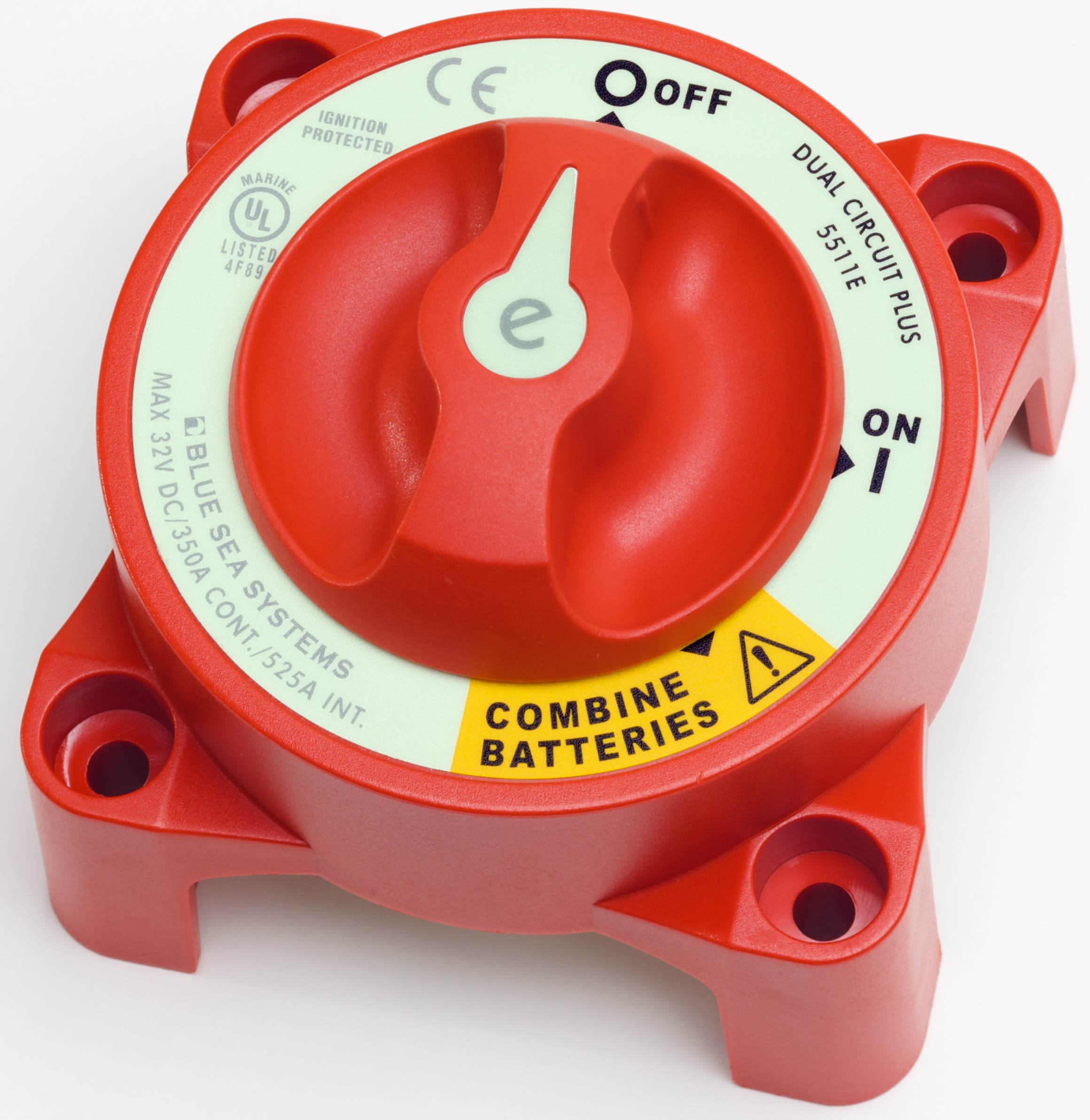Charging issue
So I've had a strange issue since middle of last season, and before I install my 2nd house battery & charger I want to figure it out.
I have the following switch with 1 starting and 1 house battery.

My normal routine since day 1 has been to ONLY use on & off, I've never had to combine the batteries for any reason. When the house battery was spent from a day on the radio I simply started the boat and charged it back up, never moving the switch. It always automatically charged both batteries in the 'On' position.
Well now it seems like it is NOT charging the house battery unless its in the 'combine' position. I confirmed this yesterday, as my VVM was showing 11.8V with the switch to 'On' and when I moved it to combine it jumped immediately to 12.9V. My house battery was basically dead from last weekend, but it should not have been. I had a 20 minute ride back that should have charged the house battery.
Is it as simple as replacing the switch? I just dont want to throw parts at it if it could possibly be something else.
I have the following switch with 1 starting and 1 house battery.

My normal routine since day 1 has been to ONLY use on & off, I've never had to combine the batteries for any reason. When the house battery was spent from a day on the radio I simply started the boat and charged it back up, never moving the switch. It always automatically charged both batteries in the 'On' position.
Well now it seems like it is NOT charging the house battery unless its in the 'combine' position. I confirmed this yesterday, as my VVM was showing 11.8V with the switch to 'On' and when I moved it to combine it jumped immediately to 12.9V. My house battery was basically dead from last weekend, but it should not have been. I had a 20 minute ride back that should have charged the house battery.
Is it as simple as replacing the switch? I just dont want to throw parts at it if it could possibly be something else.
2013 276 Cuddy ~ 350 MAG / B3

Comments
In your case a 2 bank charger should do the trick.
2002 FV 342 on Lake St. Clair - Past Commodore SHC - Vessel Examiner USCGAUX
ans FYI
dead battery won’t charge in 30 minutes
thats when battery charger/tender kicks in
how old?
Go Steelers!!!
lots it times your will see a burn spot on the back of the switch.
2018 Cherokee 39RL Land Yacht (Sorry...)
Switch set to ON = No charge to house battery, charging starting battery correctly. All systems powering correctly.
Switch set to COMBINE = Charging both batteries equally and correctly. All systems powering correctly.
Does that speak more to a switch or isolator issue?
Go Steelers!!!
installed
so I doubt he has one of the oem isolators
remove the switch and check wires with flow meter
volt
The alternator provides 14.4-6 VDC to the battery(s), stabilized by a regulator. At higher RPM's and lower loads the regulator generates heat to keep the voltage near constant. This current is sent to the isolator, which allows the batteries to charge independently of their loads: if there's no current input on the isolator the batteries outputs are disconnected. One battery can't charge the other.
Isolators are great cause they're cheap, but suffer a voltage loss. There's alternatives: solid state combiners, and automatic charge relays (ACR's). Solid state combiners are small microcontrollers mated to heavy-duty transistors: it's great because you can add other behaviors with little modification to the software to protect the battery from being overdrawn (at 11.x volts disconnect the load from the battery). ACR's are similar, but instead of a microprocessor they use capacitors, relays, and a timer.
Without an isolator/combiner/ACR there's no way to have a two battery system charge off a single alternator without manually switching the loads.
In your case, the reason why the Combine position works is because it's bridging the two batteries together.
Normal operation is make/break for both battery 1 to load 1 and battery 2 to load 2. The Combine position bridges battery 1 to 2 directly, combining the batteries into one bank and sharing them to the loads. In this position the good battery will push a charge into the bad battery, and the alternator will keep both charging. I think the switch you have has a 350A rating, which is more than even a high-capacity alternator could put out.
So why aren't you charging? I dunno. I'd start with a voltmeter at the alternator. Check for the appropriate output, then follow the wire to the next stop:
Isolator/Combiner: meter out the inputs and outputs to verify operation.
Starting Battery: check that battery's load circuit for an ACR.
Battery Switch: check for loose connections.
My honest guess is that this happened following some work on/near the batteries, and that if you dig around you'll find a heavy-gauge wire disconnected from the battery, or possibly connected to the wrong battery (I've done this). Or a loose ground - cause that'll cause all sorts of odd behavior.
Go Steelers!!!
depending on what he finds
2018 Cherokee 39RL Land Yacht (Sorry...)
All wires are secure and everything appears to be fine. Just no charge to the house batteries when the switch is set to ON.